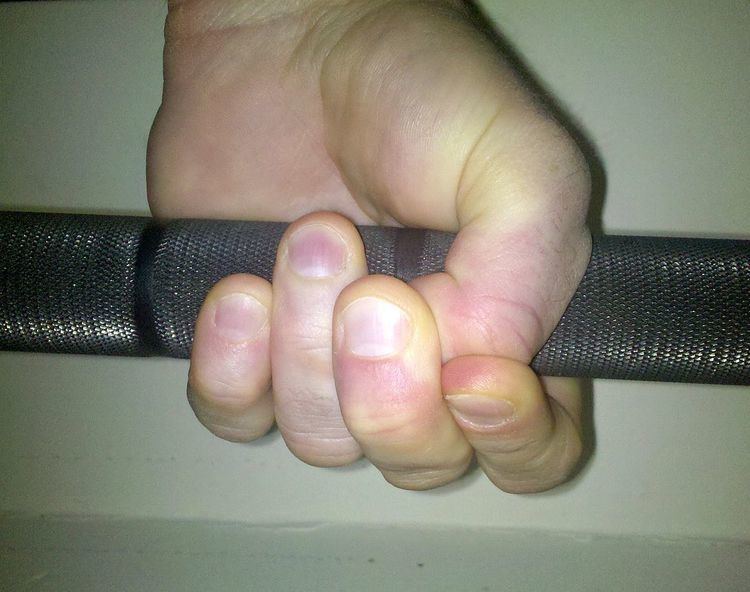 | ||
In Olympic weightlifting, the hook grip is a method of holding a barbell by gripping the thumb between the barbell and the remaining fingers. It can be used in multiple weightlifting events, including the snatch and the clean and jerk. It can also be used in powerlifting, in the deadlift, for example. When used in the deadlift, the hook grip has a number of advantages. Traditionally, lifters tend to use a "mixed" grip when working with heavy loads on the deadlift, that is, one hand being supine and the other prone. This mixed grip creates an imbalance of the shoulders, with one shoulder being externally rotated and the other internally rotated, respectively. This difference in rotation between the shoulders can create imbalances in the muscles of the back over time.
The hook grip is more secure than grips in which the thumb remains outside the other fingers, like the closed grip or the natural grip. During a snatch or clean, the lifter can exert forces up to 2-3 times the weight of the loaded barbell at rest, and the hook grip allows an athlete to maintain a grip on the bar during the phase of highest bar acceleration, the second pull. The hook grip does this by preventing the bar from rolling in the hands, whereas the bar would have a tendency to roll towards the fingertips in a normal overhand grip.
The hook grip places a relatively large amount of pressure on the thumb. As a result, it may cause pain or injury to the skin or thumbnail, although this can be overcome by regular training and gradually working with heavier loads. It generally takes up to 2 weeks to grow accustomed to the hook grip. Many Olympic weightlifters tape their thumbs with athletic tape.
